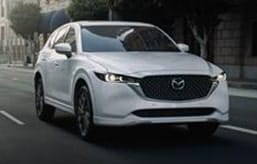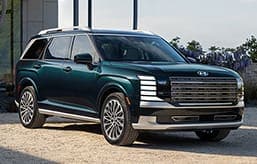- Tesla is opening its Supercharger network to several other brands.
- The various deals represent major changes for Ford, Rivian, GM and others as they move from CCS to NACS chargers.
- Stellantis was the final major brand to make the switch, but there's no deal with Tesla for Supercharger access.
Nearly Every Major Automaker Has Finally Switched to Tesla's Charger
Tesla's Superchargers are about to get a lot busier
[Update February 12, 2024: Every major automaker has switched to Tesla's NACS charging port. Land Rover is the only brand not to announce that it's EVs will make such a switch.
With the vast majority of major brands using NACS, the move will likely also force other major charging companies like ChargePoint and Electrify America to use the NACS charging port as well. This is a big move, as it brings parity across all major manufacturers and avoids the potential confusion that may come from EVs having different charging ports and using different connectors. This will make it easier for customers to charge and removes any confusion that may come as a result of different charging ports being used across different brands. It's worth noting here that, while most brands made an agreement with Tesla that allows their cars to charge at Supercharger stations, Stellantis has not — that means EVs from Dodge, Ram, Alfa Romeo and the company's other brands will not be able to charge at Supercharger locations. While their cars will use the NACS charging port, there is no guarantee they'll be able to charge at Tesla's vast network.]
Recently, and very suddenly, Tesla’s North American Charging Standard (NACS) socket for electric vehicle charging has gained a lot of popularity. Tesla has begun to open the doors to its prized Supercharger network and its NACS plug, and a number of automakers have made the commitment to adopt the once Tesla-exclusive charging standard. But what is a NACS plug, and how does it differ from the connectors we've used in the past? What EVs will you be able to charge at Supercharger stations and when? We answer all of that here.
The difference in EV charger types is a big one. First of all, before these deals materialized, only Tesla vehicles used and could charge with the NACS plug. Other EVs used other charger types, mainly CCS and CHAdeMO. Think of this landscape like charging a cellphone — you can’t charge an iPhone with a charger for a Samsung. Soon, the automakers that have struck a deal with Tesla will start using charging cables and connectors that look like the one displayed below.
The pro-con breakdown is simple. Tesla has a massive Supercharger network; Reuters puts its numbers at some 17,000 chargers in the U.S. and more than 45,000 globally. The NACS connector is not only lighter and more easily manipulated, but it is also smaller, which means a smaller port to charge your car. For Tesla owners, payment is also more streamlined. You just plug your car in, and the charger recognizes your car and the system bills the linked account for the charging session. There’s no word on how that functionality will play with other vehicles, but if adopted, it would make paying for charging a much simpler affair.
One of the larger cons is charging speed. Right now, Superchargers have a max output of 250 kW. This isn’t quite what automakers have been able to squeeze from CCS-style chargers. Electrify America, for example, has fast-charging outputs of as much as 350 kW. With some EVs featuring higher-voltage architecture, consumers will begin to expect faster charge times. Hyundai and Lucid both have vehicles with 800- or 900-volt architecture. Another downside with adapters is that they’re typically expensive and cumbersome to use, but that's not specifically limited to any one type of charger.
While CCS was the de facto standard for years, that balance has now shifted. Electrify America and ChargePoint have also opted to begin including the NACS plug in their stations.
Nearly every major automaker has now committed to moving to Tesla’s NACS chargers. The details:
Ford
Ford was the first to announce its adoption of the NACS port, which is set to start appearing on vehicles in 2025. Right now, if you have a Ford EV, you do not need to worry. While Ford will swap to NACS from the CCS port on future models, current owners of the CCS-equipped Ford F-150 Lightning and Mustang Mach-E will be able to use Tesla’s chargers and other NACS chargers via an adapter starting in the spring of 2024.
GM
GM's plans follow the timeline laid out by Ford. GM customers will also get access in 2024 via a CCS-to-NACS adapter. Then, GM will make NACS its standard on all new EVs past 2025.
Rivian
Rivian quickly followed suit. Once again, adapters will be made available for current customers in 2024, then the automaker will fully switch to NACS for 2025. Right now, we're led to believe that means Rivian’s upcoming R2 platform will use the NACS charging type since it is not set for debut until 2026 at the earliest.
Volvo/Polestar
Notably, the first three automakers we’ve discussed are all based in the U.S. — just like Tesla. Geely-owned Volvo and Polestar have announced they will both make the switch, too. Adapters will again be offered in 2024, with cars coming with the NACS port in 2025. Both Polestar and Volvo have thought ahead, and each will offer a NACS-to-CCS adapter after that date, ensuring you can charge anywhere at any time. However, Volvo simply says the adapter will “be provided by Volvo.” It isn’t clear if the adapter will be included or available for purchase. Assuming there will be CCS holdouts (Volkswagen hasn’t made a move to switch), offering an adapter seems like a smart move. Should no one else think to do this, the two Swedish brands will have set themselves apart.
Mercedes-Benz
Mercedes-Benz is one of the latest to dip its toes in the NACS swimming pool. In early July, it announced it was joining other automakers in moving to NACS. Once again, an adapter will be offered in 2024, with the move to NACS-equipped vehicles coming in 2025. Mercedes is also keen to jump in on the growing network of automaker-owned chargers here in the U.S. Its goal is to offer more than 2,500 fast chargers dotted across North America. We’ll be watching to see how well these work, with the first handful of chargers set to open at the end of this year. Thankfully, Mercedes said that the chargers will be open to non-Mercedes EVs.
Nissan
Nissan announced on July 19 that it will start offering its Ariya EV and its other new electric cars with the NACS port in 2025. It also said: "From 2024, Nissan will make available a NACS charging adapter for Ariya models which are currently equipped with the Combined Charging System 1 (CCS1) for DC fast charging. This will enable customers to connect their vehicle's charging port to NACS plugs at compatible chargers." That means that starting next year, Ariyas will be able to charge at compatible Supercharger stations so long as customers have an adapter to use.
Fisker
Fisker has announced that it, too, will be making the switch from CCS to NACS. Fisker is by far the smallest automaker to make the change to date, but it also might help this nascent brand see quicker adoption. It recently announced a compact city EV called the Pear and a slick grand tourer called the Ronin. The timing for Fisker looks a little different when compared to other major automakers. Fisker owners won't be able to use Supercharger stations until the first part of 2025, and they'll have to use an adapter to do it. Fisker said its cars will be reengineered later to feature the NACS port so buyers won't have to use an adapter. Fisker may just be starting out, but this is a big move that will hopefully bolster its chances of grabbing market share and staying alive.
Honda/Acura
Honda announced that it, too, will be adopting the NACS charging standard. From 2025 onward, Honda will build its EVs with the NACS charge port. All of the EVs Honda sells before the changeover point will be compatible with Tesla's Supercharger stations with the use of a NACS-to-CCS adapter come 2025 as well.
Subaru
Starting in 2025, Subaru EVs will adopt the NACS port too. Like so many other automakers on this list, Subaru won't leave out current owners. Subie will release an adapter that allows current models (which use the CCS1 port) to take an NACS charger.
Hyundai/Kia/Genesis
Given they fall under the same ownership, it was no surprise that the Hyundai Motor Co. confirmed all of its brands would move to the NACS. Kia, Hyundai and Genesis will start equipping their EVs with the NACS port in Q4 of 2024. Hyundai and Genesis will begin to transition cars in other markets in 2025, while Kia will do the same during the Q4 2024 timeframe. In 2025, dealers will begin carrying adapters for existing Hyundai Motor Co. EVs so that current owners aren’t left in the cold.
Lucid
Tesla's rival Lucid has also made the switch to NACS. Lucid's cars will also be able to charge at Supercharger stations come 2025. Though the move might be a bitter pill to swallow for the ex-Tesla employees at Lucid, the move goes a long way to making its EVs even more accessible for its customers.
Mazda
Though Mazda doesn't sell any EVs right now, it will in the future. That's why it announced it will move to NACS for its future products and will give its cars access to the Tesla Supercharger network, too.
BMW
2025 will be when BMW Group EVs move to the increasingly common NACS port. Brands include Mini and Rolls-Royce, both of which are owned by BMW. In addition, BMW will provide the adapter for existing cars. Software at BMW will be changing to suit the switch to NACS as well, and cars will be updated with the ability to find available Superchargers as well as pay for charging via in-car apps.
Jaguar but not Land Rover
Jaguar will also adopt the NACS port. Per usual, 2025 is the magical year that Jaguar EVs will begin to use the port. However, the brand seems committed to finding adapters for existing users sooner than that, saying that NACS adapters will be provided for I-Pace owners “once available.”
Interestingly, despite living under the same corporate umbrella known as JLR, Land Rover hasn't made the switch to NACS as Jaguar has. As of right now, Land Rover is the last major holdout on making the switch.
Toyota/Lexus
Both Toyota and Lexus have folded and gone to the NACS port. Implementation is starting up in 2025 for both, with the adapter available around the same time.
Volkswagen/Audi/Porsche
Volkswagen, Audi, and Porsche announced they will all switch to NACS. Like most major brands that have also made this switch, cars from the Volkswagen-Audi group will be able to use Tesla's Supercharger stations once 2025 rolls around.
Stellantis
Stellantis is a large corporate entity that encompasses Dodge, Jeep, Chrysler, Alfa Romeo, Maserati, Ram, Fiat and Abarth. Like all other major brands, the major conglomerate has switched to NACS. However, there is no deal with Tesla that allows cars from these brands to be charged at Supercharger stations. It remains to be seen if a deal will be made in the future or if Stellantis will hold out on this key piece of the NACS switch.
Edmunds says
The move to NACS from virtually all major automakers should bring peace of mind to anyone considering an EV in the near (and distant) future.





 by
by